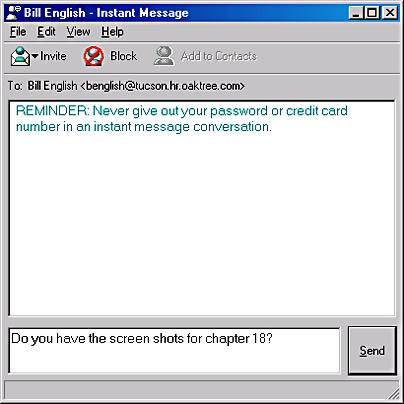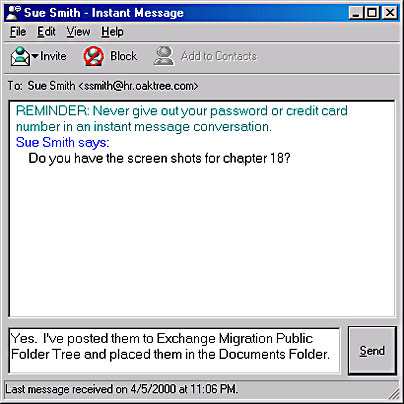Sending and Receiving Instant Messages
Users can send and receive instant messages in the MSN Messenger client. They send a message by right-clicking the name of the user to whom the message should be sent and choosing Send An Instant Message. The dialog box in Figure 19-21 pops up, and the user enters the message in the lower box and clicks Send to send the message.

Figure 19-21. Sending an instant message.
At the receiving end, the user simply needs to enter a reply and click Send (Figure 19-22). The MSN Messenger client retains the conversation for as long as the Instant Message dialog box is open. Once it is closed, the messages are gone forever because they are held only in RAM, never on disk or in a database on the Exchange 2000 server.

Figure 19-22. Replying to an instant message.
Some users may want to save or print an Instant Messaging conversation for future reference. To do so, they must select and copy the conversation and then paste it into a different program, such as Notepad. The Instant Message dialog box does not have print or save capability. Users can scroll back to earlier messages that they want to copy.
Finally, the Instant Message dialog box contains a one-to-one conversation. If one user is having three simultaneous conversations with three co-workers, that user will have three separate Instant Message dialog boxes open on the desktopand will need to switch back and forth between them to engage in those conversations. There is no way to combine multiple conversations into a single interface at this time.
EAN: N/A
Pages: 193